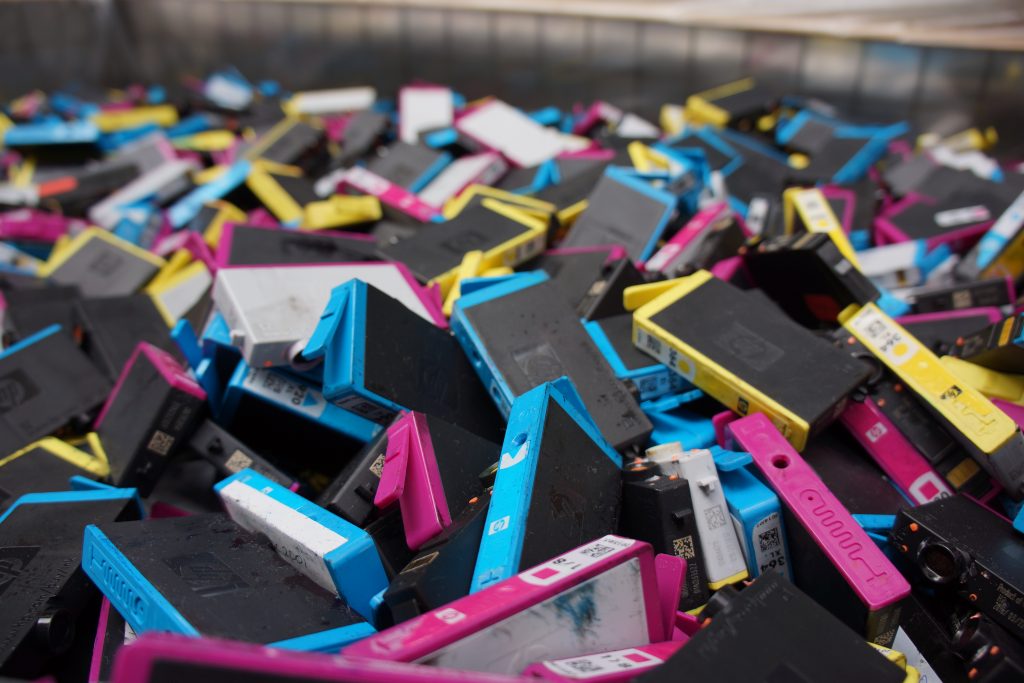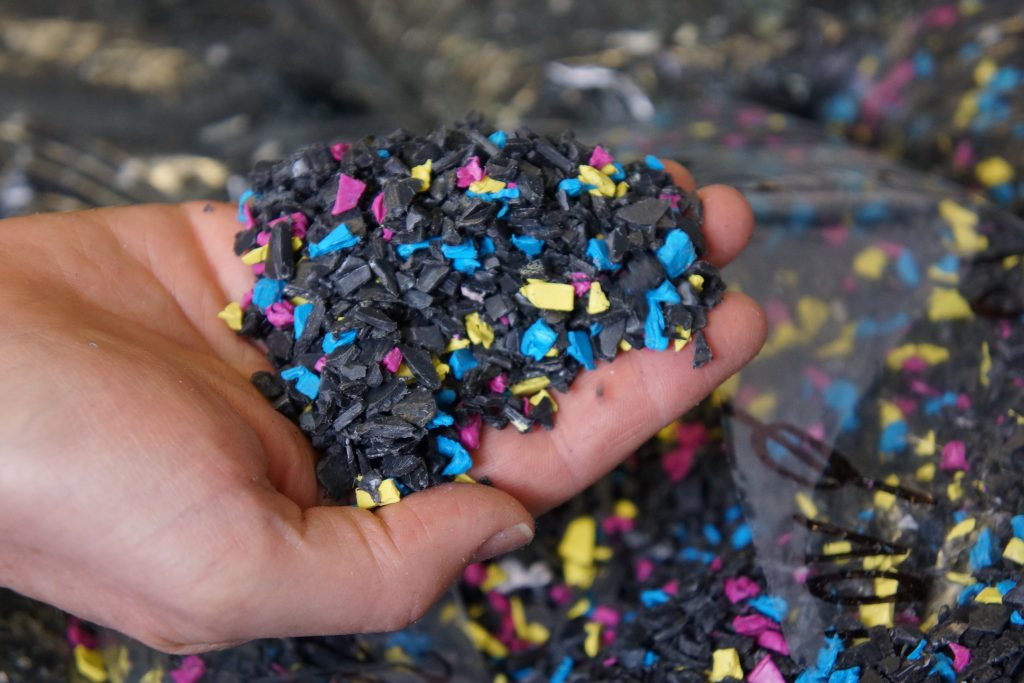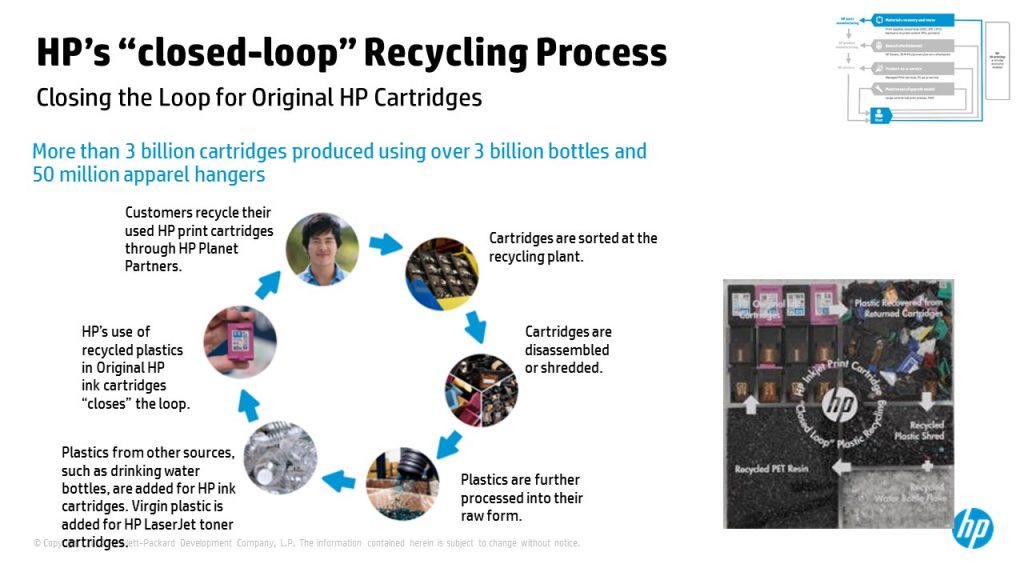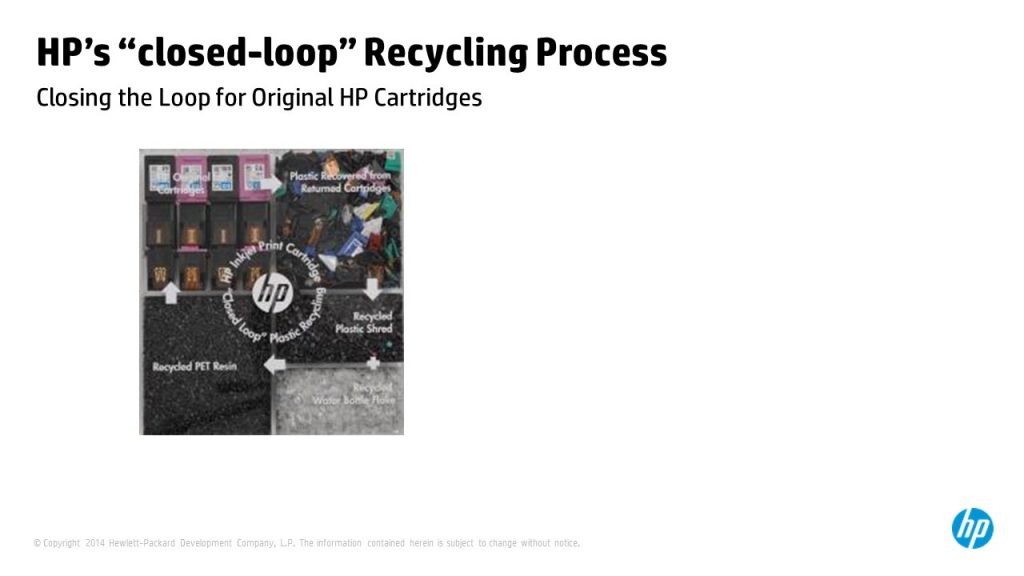Description
Hewlett-Packard Company’s earliest closed loop recycling activities began with creating HP toner cartridges with plastic recycled from the HP Planet Partners program in 2000. Leadership with closed loop plastics recycling expanded in 2005 when the company started using recovered polyethylene terephthalate (PET) from HP’s ink cartridges as a material source for new cartridges. Over time, this program has expanded to include additional cartridges and polypropylene plastic.
Added value
- Through 2015, Hewlett-Packard Company manufactured more than 3 billion HP ink and toner cartridges using more than 80 million kg of recycled content material. Through this process, the company kept 682 million cartridges, 50 million apparel hangers, and 3.3 billion post-consumer plastic bottles out of landfills, upcycling these materials for continued use.
- More than 80% of HP’s ink cartridges now contain 45–70% recycled content, and 100% of HP toner cartridges now contain 10–33% recycled content.
Challenges
- EU-wide recycling policies must operate smoothly across borders to be effective. Currently, various obstacles hinder this including national differences in requirements for trans-boundary shipments; requirements for repair facilities; diverging methodologies to calculate waste targets; and differences in calculation methodologies. Therefore, harmonising these requirements at the EU level is critical.
- Lack of incentives to buy recycled plastics, which are now more expensive than virgin material, while providing a comparable level of quality.
- Green Public Procurement is critical for national action plans as a driver for the circular economy. The criteria should be technically and economically feasible, as well as reasonable both for the (governmental) users and for the industry. Stakeholders should be duly consulted before setting them.



